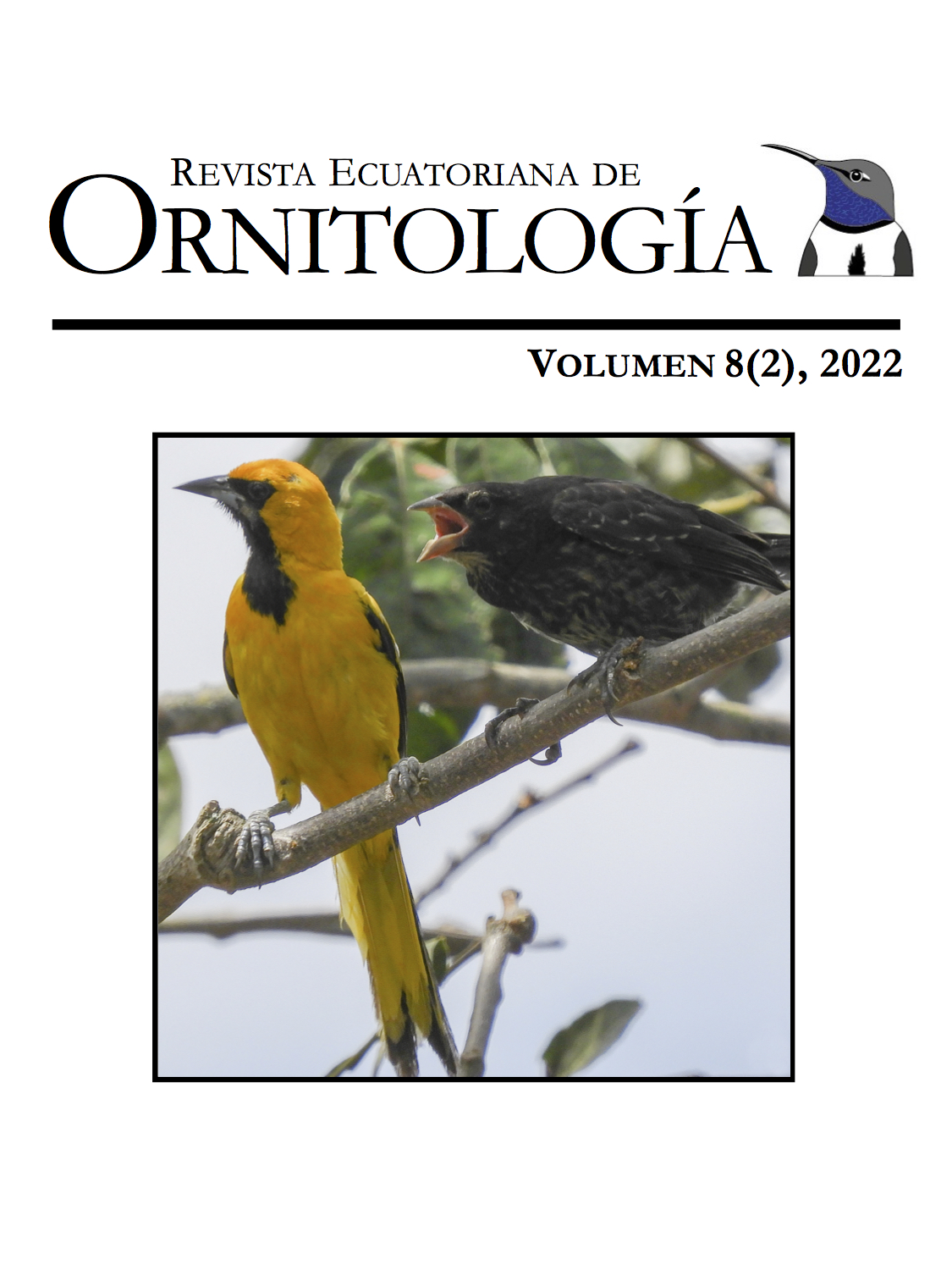BREEDING BIOLOGY OF THE SPARKLING VIOLETEAR Colibri coruscans IN QUITO
DOI:
https://doi.org/10.18272/reo.v8i2.2209Keywords:
colibrí, Colibri coruscans, comportamiento reproductivo, cuidado parental, hábitats urbanos, huevos, incubación, nido, pichonesAbstract
Sparkling Violetear Colibri coruscans has a wide geographic distribution and is generally abundant. However, knowledge about its breeding biology is scarce and often limited to anecdotal observations. Therefore, in this study we present new breeding data in Quito and surrounding valleys, based on descriptions and observations of 45 broods in 39 nests (some nests were reused) in urban and suburban habitats, and 11 broods in woodland patches near Quito. We provide data on nest and egg measurements, maternal care, nestlings’ development, and reproductive behavior. We studied nests reported on social media or discovered by the authors between 2009–2015 and January 2018–May 2020, with binoculars, photo and video cameras. Nests were open cups built in native and exotic vegetation or on artificial structures, protected by a roof, at 1.2–8 m above the ground. Nests under roofs suffered little deterioration, allowing their reuse. Nest materials in the outer layer included vegetal fibers and moss, whereas the inner chamber had soft vegetal material such as hairy achenes. Nests in woodlands were covered in lichens in the outer layer. Clutch comprised two white ellipsoidal eggs. Incubation lasted 14–16 days, and offspring left the nest after 20–31 days. Only the female incubated and reared the nestlings. In some cases, males’ courtship and/or feeding territory overlapped the females’ nesting territory. We observed breeding activity year-round, with a peak from November to April, corresponding to the second half of the short rainy season, the short dry season and the first half of the long rainy season.Downloads
Download data is not yet available.
Downloads
Published
2022-12-14
How to Cite
Musschenga, M., Cadena-Ortiz, H. ., & Juiña, M. (2022). BREEDING BIOLOGY OF THE SPARKLING VIOLETEAR Colibri coruscans IN QUITO. Revista Ecuatoriana De Ornitología, 8(2), 51–66. https://doi.org/10.18272/reo.v8i2.2209
Issue
Section
Articles
License
Copyright (c) 2022 Maartje Musschenga, Héctor Cadena-Ortiz, Mery Juiña

This work is licensed under a Creative Commons Attribution-NonCommercial 4.0 International License.
Los autores que publiquen en la Revista Ecuatoriana de Ornitología aceptan los siguientes términos:
- Los autores/as conservarán sus derechos de autor y garantizarán a la revista el derecho de primera publicación de su obra, el cuál estará simultáneamente sujeto a la Licencia de Reconocimiento No Comercial de Creative Commons.
- Los autores/as podrán adoptar otros acuerdos de licencia no exclusiva de distribución de la versión de la obra publicada, pudiendo de esa forma publicarla en un volumen monográfico o reproducirla de otras formas, siempre que se indique la publicación inicial en esta revista.
- Se permite y se recomienda a los autores difundir su obra a través de Internet en su repositorio institucional, página web personal, o red social científica (como ResearchGate o Academia.edu).



